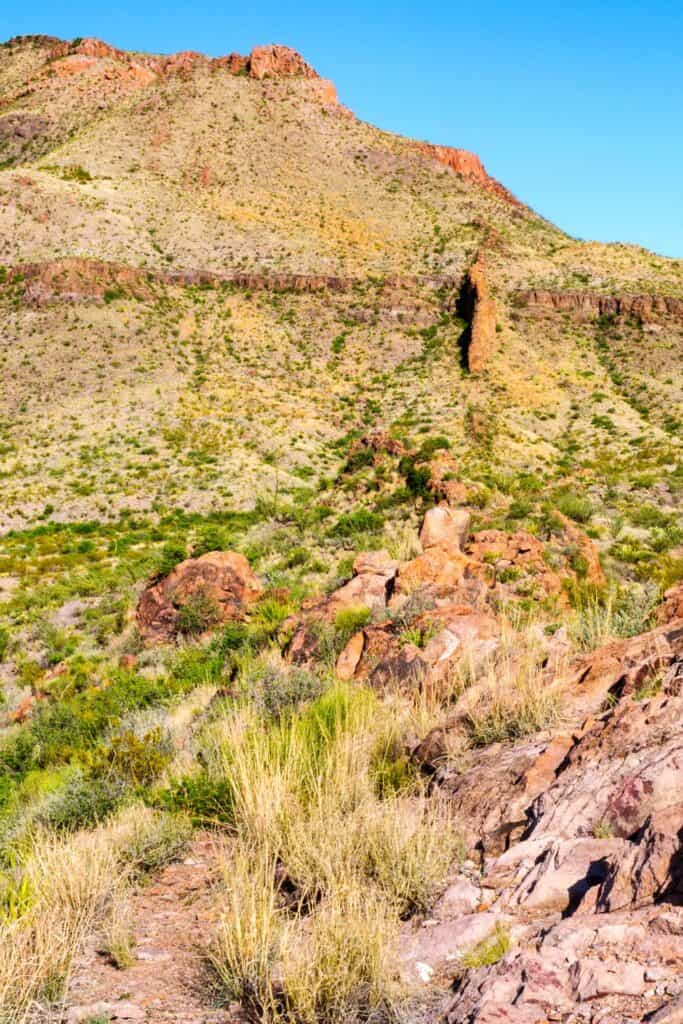
Big Bend National Park is a massive 800,000-acre park located in the western part of Texas, along the border with Mexico. It offers a range of activities, including hiking, camping, stargazing, and river rafting. Here are 12 things to do when visiting Big Bend National Park.
- Hiking: Big Bend has over 200 miles of hiking trails, ranging from easy nature walks to challenging backcountry hikes. Some of the popular trails include the Window Trail, Lost Mine Trail, and South Rim Trail.
- River Rafting: The Rio Grande River runs through the park, and visitors can enjoy rafting trips on the river. The river runs through the Santa Elena Canyon, which offers stunning views of towering cliffs.
- Camping: The park offers several campsites, including developed campsites, backcountry campsites, and group campsites. The campsites are located throughout the park and offer various amenities, including restrooms, showers, and picnic tables.
- Stargazing: Big Bend is designated as an International Dark Sky Park, which means that it offers some of the best stargazing in the country. Visitors can attend ranger-led stargazing programs or bring their own telescopes and binoculars.
- Scenic Drives: The park has several scenic drives, including Ross Maxwell Scenic Drive and the Chisos Basin Loop Drive. These drives offer stunning views of the park’s mountains, canyons, and deserts.
- Wildlife Viewing: Big Bend is home to a variety of wildlife, including black bears, mountain lions, javelinas, and deer. Visitors can spot wildlife by hiking, driving, or attending ranger-led wildlife programs.
- Bird Watching: The park is also home to over 450 bird species, including roadrunners, painted buntings, and golden eagles. Visitors can attend ranger-led bird watching programs or bring their own binoculars and field guides.
- Hot Springs: The park has several hot springs, including the popular Boquillas Hot Springs. Visitors can soak in the warm waters and enjoy stunning views of the Rio Grande River.
- Fossil Discovery Exhibit: The park has a Fossil Discovery Exhibit, which showcases fossils from the park’s prehistoric past. Visitors can learn about the dinosaurs, mammals, and other creatures that once roamed the area.
- Historical Sites: Big Bend has several historical sites, including the Castolon Historic District and the Sam Nail Ranch. These sites offer a glimpse into the area’s rich history and culture.
- Photography: Big Bend offers some of the most stunning landscapes in the country, and it’s a popular destination for photographers. Visitors can capture photos of the park’s mountains, canyons, and deserts, as well as its wildlife and sunsets.
- Ranger-led Programs: The park offers a variety of ranger-led programs, including hikes, wildlife programs, stargazing programs, and historical programs. These programs offer visitors the opportunity to learn about the park’s history, geology, and wildlife.
Big Bend National Park offers a range of activities for visitors, from hiking and camping to stargazing and river rafting. The park’s diverse landscapes, rich history, and unique wildlife make it a must-visit destination for outdoor enthusiasts. Whether you’re exploring the park’s hiking trails, soaking in its hot springs, or attending a ranger-led program, there’s something for everyone at Big Bend National Park.
Big Bend National Park is located in the Chihuahuan Desert and experiences a hot, arid climate. Here are some general weather conditions you can expect when visiting Big Bend National Park:
- Temperature: Summers are very hot, with daytime temperatures frequently exceeding 100 degrees Fahrenheit (38 degrees Celsius). Winters can be mild, with daytime temperatures typically ranging from the 50s to the 70s degrees Fahrenheit (10-20 degrees Celsius).
- Precipitation: Big Bend National Park receives most of its precipitation during the summer months, with occasional thunderstorms. The park typically receives less than 12 inches of rainfall per year.
- Wind: The park can experience strong winds, particularly during the spring months. Wind gusts of up to 60 miles per hour (97 kilometers per hour) have been recorded.
- Sunlight: The park receives an average of 280 days of sunshine per year, so it’s important to wear sunscreen and protective clothing to avoid sunburn.
It’s important to check the weather forecast before visiting Big Bend National Park, especially during the summer months when the heat can be intense. Visitors should always carry plenty of water and be prepared for sudden changes in weather conditions. Additionally, flash floods can occur in the park during the rainy season, so it’s important to be aware of the risks and follow park guidelines to stay safe.
Related posts:
Big Bend National Park, located in southwest Texas, is a haven for hikers and outdoor enthusiasts. The park boasts over 150 miles of hiking trails, ranging from easy walks to strenuous treks through rugged terrain. Whether you're a seasoned...
You've probably heard about Big Bend National Park. But what's it really all about? According to the US National Park Service, the name "Big Bend" was derived from "Big Dipper," a Texas cattle trader who, in 1846, patented a bend in the Colorado Rive...
Big Bend National Park is located in the southwestern part of Texas, near the border with Mexico. It is known for its rugged terrain, stunning landscapes, and diverse wildlife. The park covers over 800,000 acres and is home to a wide ...
Big Bend National Park is a vast and beautiful desert wilderness that offers some of the best camping opportunities in the United States. However, camping in this remote and rugged environment requires careful planning and preparation. Here...